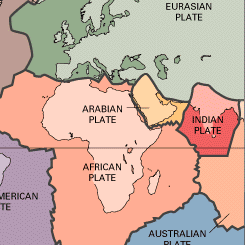Poland’s landscape is a very unique
landscape. In different areas of the
country you can find completely different forms of landscape. It has a little
bit of every type; it has the Baltic Sea, the Vistula River, and the Tarta
Mountains and also contains karsts, lowlands and highlands. The amount of water
that is present in and surrounding Poland would classify Poland as having
fluvial and costal landscapes. With the Tarta Mountains, rock formations and
other mountains in this country Poland can also be looked as being a Karast Landscape. Looking at just the landscape of Poland you
can see how unique and diverse this country really is.
Poland Landscape 1,000 Years from Now
In
1,000 years from now I think that Poland’s landscape will have changed
slightly. I think that the Yearly ice
ages that they have will be intensified.
As of now they experience an ice age every year in the winter time that
claims 10-30 lives yearly. I believe
that due to the fact of moisture in the air that has been increasing steadily
in the past years that by then the ice ages will be even more severe and claim
30-50 lives. This will have a major
impact on not only the landscape but the overall population and living
conditions of Poland.
Poland Landscape 10,000 Years from Now
In 10,000
years from now I think that Poland’s landscape will have changed a lot. I think
that because of the Sea level fluctuations.
As of today in 2013 the sea level line is at 500km which is a relatively
low level, and due to that a vast amount of the population lives in these costal
lowlands. With climate changes that are
already in the process and the fact that the sea level is anticipated to rise, I
see the landscape changing quite a bit.
I think that in 10,000 years the sea level will have risen to no longer
be classified as being a low level and with this there will be no more lowlands
for the population to live on. I think
that the population will have to move to higher grounds which would probably be
more inland, as a result to this I think that the population density may be
affected and they might be facing the problem of overpopulation.
 |
| Low Sea Level |
Poland Landscape 1,000,000 Years from Now
In 1,000,000
years from now I think that Poland’s landscape will have changed drastically. I
think that over these years things such as increasing ice age, sea level
fluctuation and the population demographics that are caused by these two and
many other issues will have transformed Poland to be something completely
different from what it is today. I
believe that with all the changes that are happening it will be such a drastic
change that is will not be the same Poland that we see as of today.
| Possible Overpopulation |
Conclusion
Overall
Poland was a great place to research for my Physical Geography class. There were so many different aspects that I could
look at and examine. Poland truly has
one of the most diverse landscapes I have ever seen and I am glad that I got to
see this for myself in this blog.
References
http://www.poland.travel/en/about-poland/geography/
http://www.bioone.org/doi/abs/10.2112/07A-0014.1
http://www.rewildingeurope.com/areas/eastern-carpathians/local-situation/
http://clasfaculty.ucdenver.edu/callen/1202/Landscapes/Fluvial/Fluvial.html
http://clasfaculty.ucdenver.edu/callen/1202/Landscapes/KarCoast/KarCoast.html
http://clasfaculty.ucdenver.edu/callen/1202/Landscapes/Glac/Glac.htm









